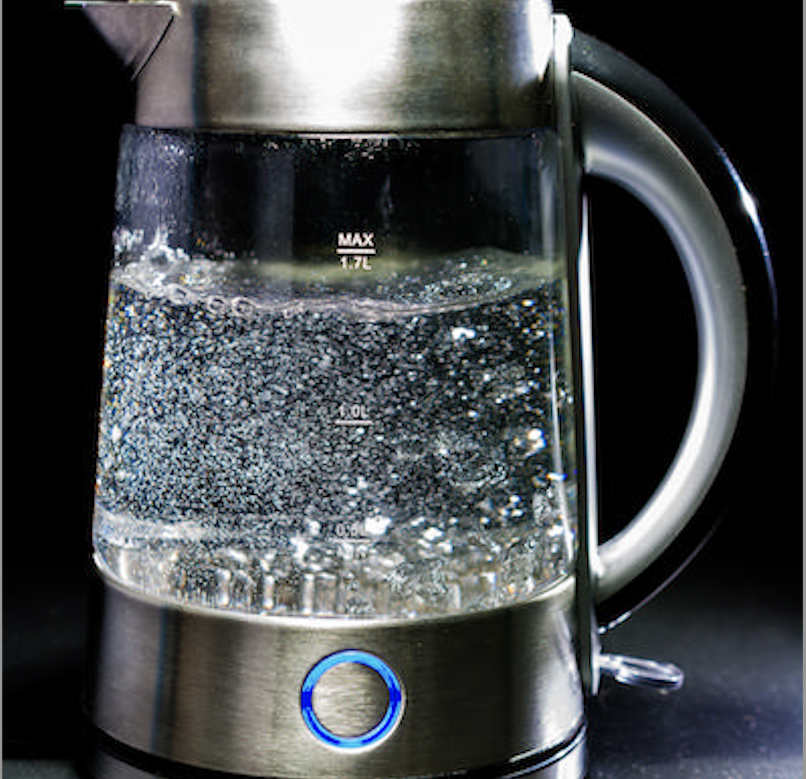
Getting Rid of Microplastics in Drinking Water
Boiling drinking water before consumption is commonly employed in emergencies or during camping trips when the cleanliness of available water is uncertain, as it effectively kills many harmful micro-organisms (pathogens) that can cause illness. Chinese scientists have recently unveiled an unexpected benefit of this practice: boiling water effectively removes nano- and microplastics.
Microplastics refer to synthetic polymer particles smaller than 2 mm, while nanoplastics are even smaller, measuring less than 0.001 mm or 1 micrometre, making them invisible to the naked eye. The presence and impact of microplastics on the environment and human health have been studied since they were first detected in the natural environment in 2004. Microplastics are so tiny that they are transported by air currents or water flows across the globe, from the Pyrenees Mountains to Antarctica.
In a recent study, microplastics have been discovered in sediments dating back to the first half of the 1700s. A team of scientists analysed sediment layers from three different lakes in Latvia, aiming to investigate whether the onset of the Anthropocene era could be identified by the presence or absence of microplastics in geological layers. However, the detection of microplastics in a layer dating back to 1733, a time before the technology for producing synthetic polymers existed, led to the conclusion that this method was ineffective as microplastics were able to penetrate into layers they did not belong to. In a separate study conducted in 2022, microplastics were found in the human body, prompting a more serious examination of their potential health effects.
The technologies developed to remove microplastics from different mediums are complex and expensive. In a bid to address this issue, Chinese researchers conducted a study to investigate what would happen if they boiled a water sample containing microplastics. They found that when hard water containing minerals such as calcium carbonate is heated, the crystalline form of calcium carbonate covers the micro and nanoplastic particles, preventing them from remaining suspended in the water. The remaining particles can then be easily removed using simple and inexpensive filters such as paper or cloth coffee filters. The efficiency of this process depends on the hardness of the water, with up to 90% of micro and nanoplastics removed from water containing high levels of calcium carbonate. The efficiency of this process depends on the hardness of the water, with up to 90% removal observed in very hard water containing 300 mg/L of calcium carbonate. Even in soft water with a calcium carbonate concentration of 60 mg/L, a 25% removal efficiency was noted.
Dr. Zhanjun Li from the School of Biomedical Engineering at Guangzhou Medical School and his team say that the method of boiling water to remove microplastics is pretty straightforward. There are no technical complications; simply boil the water for five minutes, allow the hardened crystals to settle for ten minutes, and then consume it once cooled. It does not matter how you boil the water or what type of container you use.
Additionally, two new studies aim to transform plastic pollution into a valuable resource.
The chemical structure of plastics resemble that of fatty acids found in soaps used for washing hands. However, plastics consist of carbon molecules arranged in significantly longer chains compared to fatty acids. Researchers employed a specialized oven to heat the plastic, initiating a controlled burning process. They halted the process once the carbon molecules got sufficiently reduced in size, capturing them before they could completely convert into gas. The procedure yielded a short-chain polyethylene wax, which was subsequently repurposed into soap. Guoliang Liu, from Virginia Technical University and the lead author of the article published in Science, emphasises that while this experiment proved successful, it does not offer a definitive solution to combat plastic pollution. The ultimate solution is to reduce plastic consumption.
Another significant development involves the discovery of a new fungal species, Eurythenes plasticus, which has adapted to consume polyethylene as part of its diet. Building on the observation that hardwood trees take a long time to decompose, researchers collected fungal samples from the vicinity of fallen trees, such as ebony, in protected forests. Fungi serve as primary decomposers of woody organic matter rich in substances like cellulose and lignin. These fungal specimens were isolated in laboratory conditions and provided with a diet comprising hardwood wood particles and plastic. Through observation, researchers noted that fungi exclusively fed on plastic (polyethylene) altered their metabolism to utilise the carbon present in the plastics as nutrients, facilitating rapid breakdown. Given the similar chemical properties of lignin and polyethylene, the enzymes employed by fungi to decompose lignin were also effective on polyethylene.
Indeed, the capacity of hundreds of fungal and bacterial species to degrade various types of plastics has been known for some time. The microbial biodegradation processes that convert fossil fuel-based plastics into monomers or minerals are considered a significant approach to addressing long-term plastic pollution. However, numerous challenges must be addressed before such technology can be widely implemented. Until then, scientists stress the importance of reducing plastic consumption and promoting the use of biodegradable materials.
REFERENCES
- 1. https://pubs.acs.org/doi/10.1021/acs.estlett.4c00081
- 2. https://cosmosmagazine.com/science/chemistry/removing-microplastics-from-drinking-water-as-simple-as-putting-the-kettle-on
- 3. https://www.ncbi.nlm.nih.gov/pmc/articles/PMC9026096/
- 4. https://futurism.com/the-byte/microplastics-sediment-layers
- 5. https://tc.copernicus.org/articles/16/2127/2022/
- 6. https://www.theguardian.com/environment/2023/aug/10/scientists-turn-old-plastic-into-soap-polyethylene-fatty-acids-pollution
- 7. https://arstechnica.com/science/2023/09/fungi-could-be-the-answer-to-breaking-down-plastic-junk/
